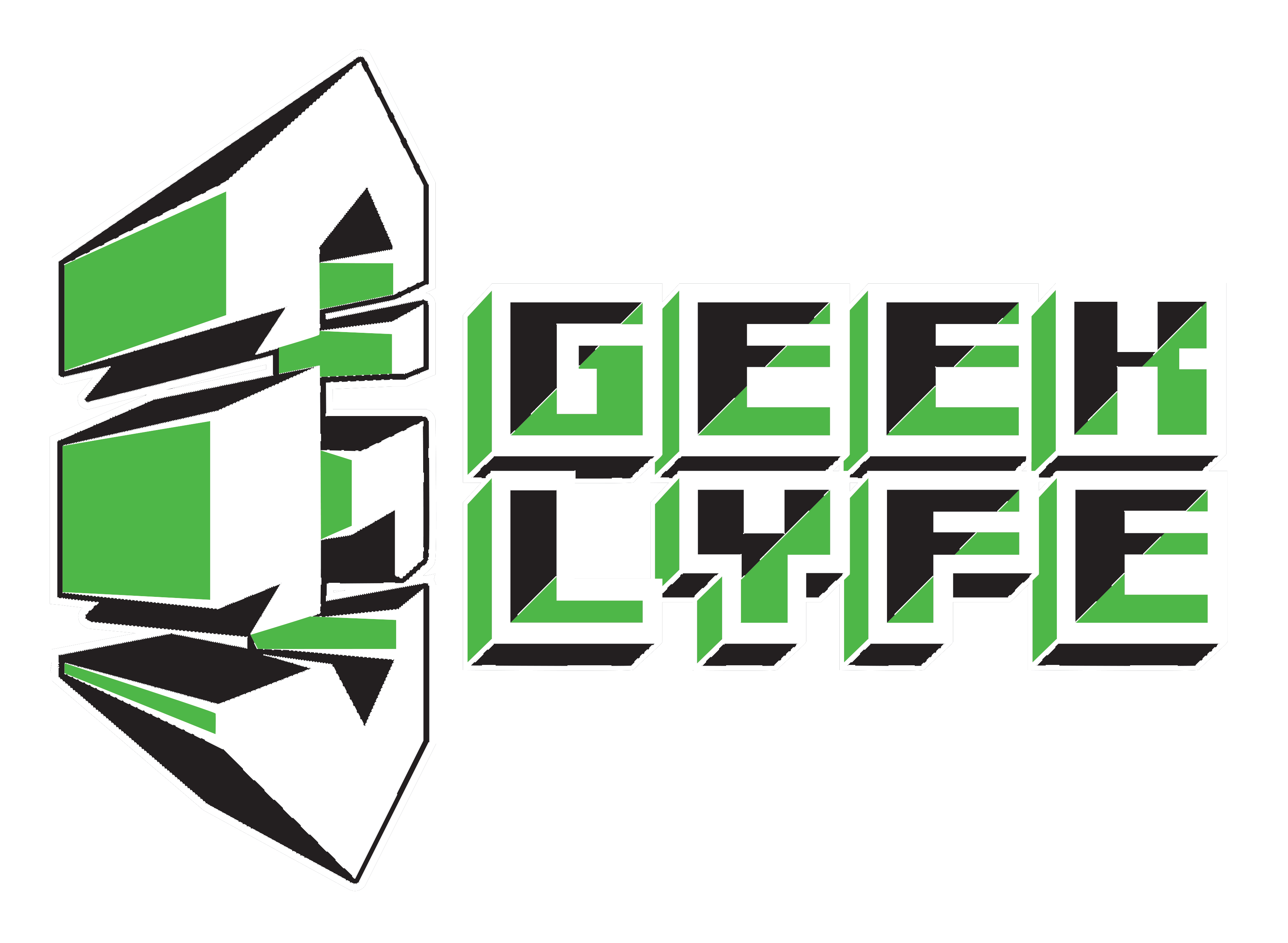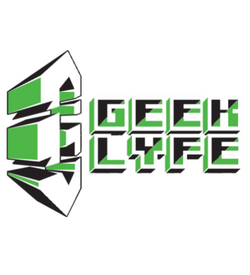Q&A: Justin Carter and Negative_Space Demo

Q&A: Justin Carter and Negative_Space Demo
Phoenix Comicon isn’t just a hub for cosplayers and geeky brand lovers; it also features the Southwest Video Game Showcase, a place where game designers and creators come together to show off their new games and preview the competition. Within this group, awards are given to the best of the best, paying tribute to up-and-coming creators and companies. This year, Justin R. Carter won multiple awards for his unique creation Negative_Space, an addicting yet simple game designed to challenge players’ skill. Carter won the Juciest Game Award and was Runner Up for the Player’s Choice Award with his multi-level demo, capturing the attention of many game lovers. In an exclusive interview with me, Carter discusses his new game and what fans can look out for from him. Plus, Carter lets me play the demo for myself! Check out the video below to see me test my skills on Negative_Space!
The Geek Lyfe: What got you into making video games?
Justin Carter: At a very young age of 5 or 6, I knew I wanted to do something with art, I just didn’t really know what. Two of my favorite things to do when I was around that age was to draw and play the Super Mario Bros games on my NES. Then one day that passion for art and video games suddenly clicked together in my head, and I knew I wanted to make games. As a kid you would get asked all the time what you wanted to be when you grew up. Some kids would say a firefighter, others a policeman – but I said that I wanted to work at Nintendo and make video games. The idea of being able to create a form of art that other people could interact with is what excited me the most and drew me into making games.
Watching people play something I’ve made is what really satisfies me the most about making games. Watching them think and then see that AH-HA moment on their faces as they figure it out just puts a smile on my face. I do it because I not only enjoy the challenge of designing games, but I also like the challenge it presents to the player and watching them overcome it.
GL: What inspired you to create Negative_Space?
JC: Over the last 5 years, I’ve worked on a lot of different games, some of them by myself and others on teams of anywhere from 5 to 15 people. Half of them never made it to the prototype stage and the ones that did usually fizzled out due to a many number of reasons, from team members quitting, issues in the design, or I’d think of a new game idea and just stop working on what I was doing to do that. I started making a prototype for Negative_Space back in February of 2016 with the initial idea of a 2D platformer where you have to invert black and white to get to the exit in the room.
Art had been an issue in a lot of previous games I worked on, so I wanted to work on a game that had very simple art so I could focus more on the level design and mechanics. Two months after I initially started, I had tweaked and refined the game to a point that I was satisfied with the core mechanics. I really liked how it turned out and for the first time it felt like something that I could not only finish, but actually sell for money. It was because of this that I’ve continued working on it instead of jumping ship and working on something else.
GL: What has been the hardest part about making Negative_Space so far?
JC: There have been two things that have really challenged me so far throughout the process of making Negative_Space. The first one is the level design. Level design has always been my main passion in making games, and on a lot of the games I’ve worked on, I did the level designing. My initial concept for going about the level design for Negative_Space was to make levels where one level ended where the next level began. I tried doing this in a couple different ways, but didn’t like the end result of any of them. Instead I tried it with the player, making him begin the level in the same spot the previous level ended, and I liked that it was a far less restricting design. Doing this though meant every level I design has to have a specific starting and ending point, which really challenges me when making levels.
The difficulty of the game is the other thing that’s been really hard about making the game. I knew from the start I wanted to make it challenging, like Super Meat Boy or I Wanna Be the Guy, but with shorter, more condensed levels. I wanted it to be hard but fair, and sometimes finding that balance can be difficult, so it takes a lot of tweaking and play-testing for me to see if something is too hard or not hard enough.
 GL: How did it feel to receive the Juiciest Game Award, as well as getting 2nd place for the Player’s Choice Award at Phoenix Comicon? Were you expecting any of it?
GL: How did it feel to receive the Juiciest Game Award, as well as getting 2nd place for the Player’s Choice Award at Phoenix Comicon? Were you expecting any of it?
JC: Honestly, my whole experience in the Southwest Video Game Showcase at PHXCC this year seems so surreal. Thursday morning, day one of the con, I felt ill at the thought of hordes of people playing my game, especially children. Up until that point only a handful of people had played it, mostly other game developers, so I didn’t know how well it would be received. I kept waiting for that one person to just hate it and tell me that it sucked and that it was a terrible game, but that moment never came. It got a lot of praise and people absolutely loved it. I was in shock! People would play anywhere from 10 minutes to an hour, sometimes even longer, and some people even came by every day of PHXCC just to play it and talk to me. I had so many people that wanted to buy the game that I wish it had been done so I could have sold it to them right there. I never imagined getting that kind of reception on my first actual game that I’ve shown to the public. It was because of how good the game felt that I won the Juiciest Game Award and the custom gold Xbox One controller, but I got 2nd for the Player’s Choice Award and the Unity backpack because so many people loved it and kept coming back to play it. It was really thanks to everyone that played the game that I won those 2 awards, so I can’t tell you how grateful I am that they did.
GL: Why do you think people chose your game? What makes it stand out?
JC: The difficulty. If I took the demo as it is now and made it easier I don’t think it would get the same positive feedback that it received. If you play a game and all you do is win, you aren’t being challenged and eventually you’ll just get bored and move on to something else. Although people died a lot throughout the demo, they liked how hard it was and it kept them playing because they wanted to get better and go further into the game. Negative_Space also had the simplest graphics out of all the games in the showcase, yet it attracted just as much foot traffic as the other games. That tells me that people truly appreciate the complexity and design of the game because it doesn’t have flashy graphics to fall back on.
GL: Where are you and your team headed from here?
JC: At the end of June, the Independent Game Developers Association (IGDA) is hosting a demo night at a video game bar in Mesa called The Grid, so I’m looking to have more levels finished for people to play there. Indiecade in Los Angeles is coming up in October as well, so I’m going to be submitting my demo into it once I get a trailer made and possibly showing it off there.
GL: Are there any goals/plans that you and the company are working or planning on? Is there anything we should be looking out for besides Negative_Space?
JC: In a few months I’m going to be submitting Negative_Space onto Steam Greenlight once I get more of the game done. I’ve also considered Kickstarter to raise extra funds to help move the project along faster, but I haven’t decided if it’s something I’m going to do yet or not. I do have another project that I’m interested in working on in addition to Negative_Space, but it’s still too early to say anything about it.
GL: Is there a release date for Negative_Space?
JC: I’m shooting for a Spring of 2018 release date on Steam, and ideally I’d like to also release it on the Nintendo Switch, PS4, and Xbox One as well if I can.
GL: Fun Fact: What’s your favorite video game?
JC: That is always the hardest question you could ask any gamer! I have a lot of games that I love and that are personal favorites of mine. Super Mario Bros. 3 holds a special place in my heart because of the nostalgia factor, and that it was the initial game that made me want to make games. However, Wario Land 3 was the first game that I really appreciated the level design and mechanics and how they utilized them in so many different ways. I’ve gone back to that game time and time again for design inspiration so I would have to say it is my favorite overall.
Responses have been edited for brevity and clarity.
Check out my play through of Negative_Space demo below!
We want to give a huge shout out to Justin for taking the time to talk with us about him and his incredible game, Negative_Space!
Tony AKA Powerforce is the master of playing Fox on Super Smash Bros, he loves him some JRPGs and can not get enough of indie games. Rumor has it that he is actually creating his own game! He is a solid guy in real life and will slit your throat in a table top RPG. Great guy! Loves dogs!






